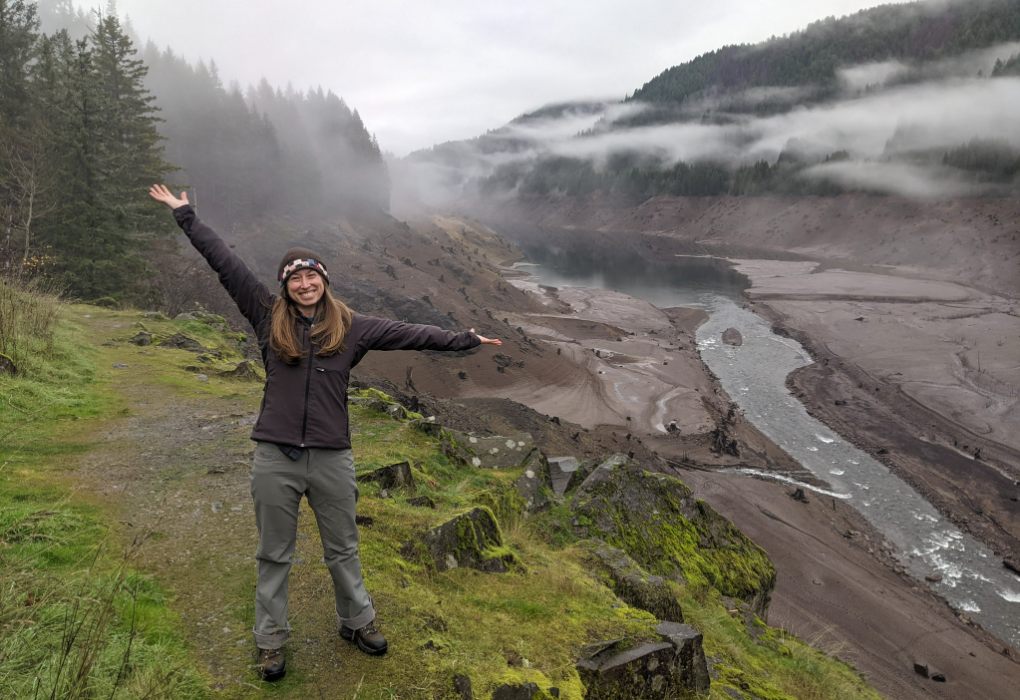FAQs About Willamette River Basin Reservoir Drawdowns
All Oregonians have a stake in protecting and restoring native salmon populations in the Willamette River Basin. Time is running out—salmon populations are at their lowest levels ever recorded. Federal fisheries managers estimate that some of the Willamette’s wild salmon runs may go extinct within about 15 years (by around 2040) if we fail to act. The numbers are dire, and reservoir drawdowns are a critical solution needed to prevent extinction. By temporarily lowering water levels, we can restore more natural river flows, improving fish migration and access to essential habitats.
This FAQ page addresses common questions and concerns about reservoir drawdowns, including their effects on wild fish populations and local water quality.
FAQs About Willamette River Basin Reservoir Drawdowns
Q: How do reservoir drawdowns work to help salmon populations?
A: By drawing down the Willamette River Basin reservoirs, the Corps can return the river to a more natural flow and restore endangered salmon populations. Deep drawdowns allow juvenile fish to migrate more easily by reducing the length of the reservoirs. Deep drawdowns also allow the fish to access lower outlets on the dams, avoiding dangerous turbines.
Q: Last fall, drawdowns created muddy water and increased sediment in the water, reaching 10 to 20 times its normal levels at times. Is there any concern about drawdowns as the solution if it harms local water quality? What do you say to people who say drawdowns prioritize fish over people?
A: We all agree that communities across the Willamette Valley deserve clean and reliable drinking water and we are committed to working with leaders to provide support for impacted Oregonians. It’s important to remember that recovery does not happen overnight, and we can work with communities to find solutions that help fish and ensure clean water. While each dam is different, the success at Fall Creek provides strong evidence that drawdown can work and that turbidity, which makes water cloudy, will lessen with time.
Q: Can the sediment in the water harm the salmon?
A: Research from Lookout Point and Green Peter reservoir, as well as the deep drawdown conducted at Fall Creek Lake, found that the river quickly cleared up, and Corps officials say the sediment most likely did not harm young salmon, and helped restore the river’s ecology by washing sediment and organisms downriver.
Q: How successful can seasonal drawdowns be at improving salmon populations?
A: Drawdowns are one of many important tools that allow juvenile salmon to successfully pass through dams. In fact, Corps’ studies “indicate a 98-99% survival rate” for out-migrating Chinook juveniles at Fall Creek during the 2015 deep drawdown.
Q: How do you know the temporary drawdown won’t affect flood control?
A: The Willamette River Basin dams were originally built for flood control, and that purpose will not change. Empty reservoirs can hold more water. Between the 13 reservoirs in the Willamette Valley, the Corps anticipates them being able to work together to keep the Willamette River at stable levels.
Q: How can the public get involved and make their voices heard?
A: Oregonians should talk to their elected officials and decisionmakers to make clear that we can’t let native salmon populations that are important to our way of life go extinct. You can also visit nativefishsociety.org and fill out a petition urging Oregon’s congressional delegation to save salmon and save money in the Willamette.
Q: Last year, thousands of kokanee died as a result of the drawdowns. Will this happen again?
A: The Corps typically sees dead kokanee every year when it draws reservoirs down in the Fall in anticipation of winter flood control needs. Last year, there were greater kokanee losses due to the deep drawdowns. No one wants to see thousands of fish die, but it is important to remember that kokanee salmon are stocked, are not native to the Willamette Basin, and they are not a listed species under the ESA. The drawdowns are intended to help juvenile Chinook salmon and steelhead, two highly imperiled species protected under federal law, get past the dams. There is a chance that kokanee will continue to be impacted by drawdowns, but we are hopeful that the Corps learned from last year's drawdowns so that operations can provide the intended fish passage for Chinook salmon and steelhead without increasing the impacts to other valued fish, like kokanee.
